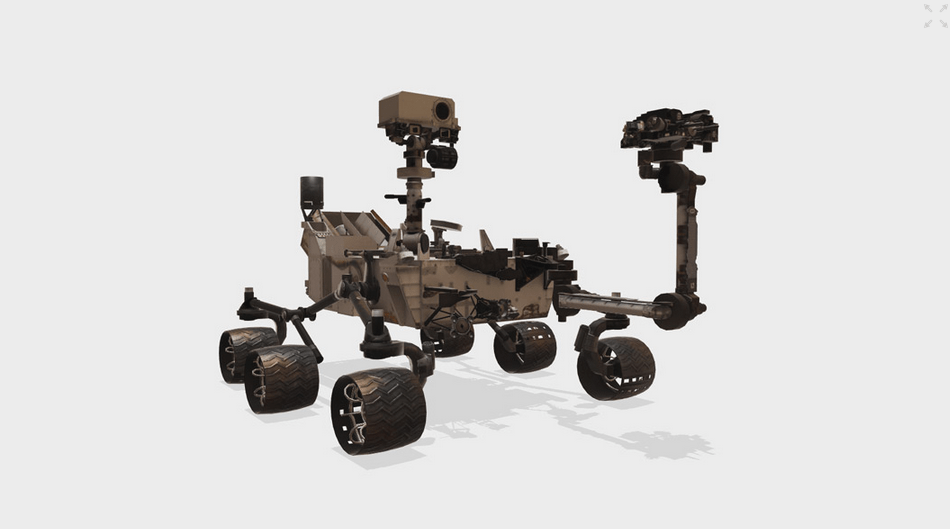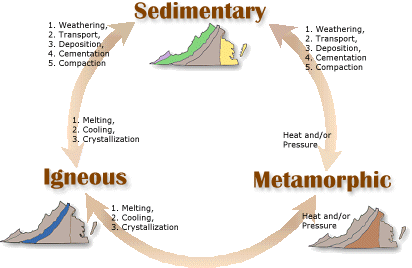In Today’s Science News, we’ll learn about a gene editing trial on humans which may be the answer to improving the vision of those afflicted by Leber Congenital Amaurosis, that it is likely that there once was an earth-like environment on Mars and, finally, a novelty to this series where I’ll cover topics from geology to astronomy.

Article 1: Participants of pioneering CRISPR gene editing trial see vision improve
SD-Date: May 6, 2024
Et-Date: May 9, 2024
Science-Daily Summary: „About 79% of clinical trial participants experienced measurable improvement after receiving experimental, CRISPR-based gene editing that is designed to fix a rare form of blindness, according to a new article.“
Abstract of the Study: https://www.nejm.org/doi/10.1056/NEJMoa2309915
Method of Research
The study was conducted by the Oregon Health & Science University. 14 participants, 12 adults and two children, received the EDIT-101 treatment in one eye. The participants of the study were afflicted by the Leber Congenital Amaurosis, or LCA, which is commonly caused by mutations in the CEP290, CRB1, GUCY2D or RPE65 genes which leads to severe visual impairment at birth or shortly afterward. In ca. 30% of the cases, the cause of the disorder is unknown yet.
This mutation occurs in 2 or 3 out of 100,000 newborn and may worsen over time. The area which is primarily affected by this condition is the retina at the back of the eye, where specialized tissue lies to detect light and colour.

The participants were recruited from five different clinical sites: The OHSU Casey Eye Institute in Portland, Oregon; Bascom Palmer Eye Institute in Miami, Florida; Mass Eye and Ear in Boston, Massachusetts; Scheie Eye Institute at the University of Pennsylvania and Children’s Hospital of Philadelphia; and Kellogg Eye Center in Ann Arbor, Michigan.
In order to treat the patients, CRISPR was used for in vivo (Italian for „within the living“, meaning it was tested on the whole organism opposed to a tissue extract) gene editing.
In early 2020, the OHSU Casey Eye Institute treated its first patient.
To evaluate the effectiveness of the experimental treatment, four specific outcomes were used:
- Visual acuity
- How well participants saw colored points of light while looking into a specialized device, which scientists call a full-field test
- How well participants navigated a research maze with physical objects and varying amounts of light
- How much participants reported experiencing improved quality of life
Findings
The key results, as they are listed in bullet points in the ScienceDaily article, were as follows:
- 11 participants, about 79%, showed improvement in at least one of four measured outcomes.
- 6 participants, about 43%, showed improvement in two or more outcomes.
- 6 participants, about 43%, reported improved vision-related quality of life.
- 4 participants, about 29%, had clinically meaningful improvement in visual acuity, or how well they could identify objects or letters on a chart.
- There were no serious adverse events related to the treatment.
- Most adverse events were mild or moderate, and all have since been resolved.
„While more research is needed to determine who may benefit most, we consider the early results promising. To hear from several participants how thrilled they were that they could finally see the food on their plates — that is a big deal. These were individuals who could not read any lines on an eye chart and who had no treatment options, which is the unfortunate reality for most people with inherited retinal disorders.“ – Eric Pierce, M.D., Ph.D
Source
ScienceDaily Article
https://www.sciencedaily.com/releases/2024/05/240506131535.htm
Leber congenital amaurosis
https://medlineplus.gov/genetics/condition/leber-congenital-amaurosis/
Article 2: Earth-like environment likely on ancient Mars
SD-Date: May 1, 2024
Et-Date: May 9, 2024
ScienceDaily-Summary: „A research team using the ChemCam instrument onboard NASA’s Curiosity rover discovered higher-than-usual amounts of manganese in lakebed rocks within Gale Crater on Mars, which indicates that the sediments were formed in a river, delta, or near the shoreline of an ancient lake.“
Open-Access: https://agupubs.onlinelibrary.wiley.com/doi/10.1029/2023JE007923
Method of Research
We leave the earthly realms and take a trip to Mars where NASA’s Curiosity rover explores our red neighbour. Launched in 2011, Curiosity seeks to answer the question whether Mars‘ ancient climate was suitable enough for microbial life by analyzing the rock record.

It’ll also show you the current location of the robot, as well as the planet’s itself.
The research team used Curiosity’s tool ChemCham, a laser that forms a plasma on the surface of the rock to quantify the elemental compositions by collecting light. It was developed at Los Alamos and CNES (the French space agency). The sample was taken from the Gale Crater, 3.7 billion years ago it came about after a large meteor impact – back then, water still existed on Mars and it formed a large lake. The basic form we see today took 700 million years to be shaped (or 0.7 billion years).
„Mineral and chemical readings show that water from both the lake and subsurface was friendly for potential microbes. Drill samples from the lakebed show key elements, organic molecules, nutrients and energy sources that microbes could have used. Water flowing through underground fractures could have supported life even in deeply buried rocks. And the composition of some layers makes them good for preserving potential signs of past life.“ (NASA)
| Plasma (in physics) (source: https://www.britannica.com/science/plasma-state-of-matter) |
| In physics, plasma is the fourth state of matter – different from the solid, liquid and gaseous states. Collectively, due to electromagnetic forces being able to act at large distances, plasma will act like a fluid even when the particles rarely collide with each other. It is produced when the atoms in a gas become ionized. |
Findings
The rocks analyzed were located in the lakebed within the crater and were a mix of sands, silts, and muds. Most of the lakebed rocks in the Gale Crater are made up of muds, in contrast to muds the more porous sandy rocks let groundwater pass through more easily.
What was surprising was the amount of manganese oxide found there. On Earth, the process is known and happens all the time – through photosynthetic life (Cyanobacteria, plants, etc.) which produces a lot of oxygen and microbes that help in catalyzing the manganese oxidation reactions. On Mars, the mechanism is unknown as there’s still no evidence for life and how the manganese was formed and concentrated.
In short: the Curiosity rover discovered large deposits of menganese oxide, but more questions have emerged from this discovery regarding its accumulation and formation.
Source
Science Daily article
https://www.sciencedaily.com/releases/2024/05/240501100729.htm
Mars Science Laboratory: Curiosity Rover
https://science.nasa.gov/mission/msl-curiosity/
A Guide to Gale Crater
https://science.nasa.gov/resource/a-guide-to-gale-crater/
Plasma (state of matter)
https://www.britannica.com/science/plasma-state-of-matter
SciencExplained
Usually, I’d write about a third scientific article but given that this is not always regular, you might be in good hands with Nature Briefing which I’m signed up to as well.
So, instead, I’ll talk about the sciences in general – from geology to astronomy, or well, rather what I understand and feel capable of doing. If it gets too complicated, but I still find it too interesting to be left out, I’ll give a short explanation on my reasoning and then link to the article or study. Without further ado, let’s talk about rocks.
Three Types of Rock
From March 28 to April 2, my family and I went to South Tyrol for vacation – we’ve been there so often, there’s pretty much no place we haven’t seen yet. An ideal place for hiking.
On Sunday I visited the minerals museum in Teis, it is part of the Villnoeß municipality. A rather small museum, but definitely worth the time! I spent an entire hour in there looking at every mineral exhibited (except the tiny ones in a cabinet next to the miscroscope).

I suppose the National History Museum of London, where I’ve been to, left behind a seed when I visited their section about minerals too, that was last Summer. Because after spending an hour in there I was finally certain what I’d love to study one day: geology.
And well, that brings us to the three different types of rock we are going to talk about.
| Definition |
| Rock (n.) – an inorganic solid composed of a variety of minerals that comprises the Earth’s lithosphere. |
In geology, you distinguish between three types of rock: igneous rocks, sedimentary rocks and metamorphic rocks. Igneous rocks either form through magma consolidating in the depths of Earth resulting in instrusive rock like Granite, or the magma flows to the surface where it becomes extrusive rock like basalt. The ocean crust, for instance, consists almost entirely of of igneous rocks. Sedimentary rocks are the result of material, through water, wind or ice, deposited on the earth’s surface. Since it is deposited in layers, these different layers are a distinguishing characteristic of sedimentary rocks. In contrast to the other types of rock, you can often find fossils inside of them. Some sedimentary rocks consist of eroded fragments from other rocks, which are then cemented in various ways.
Finally, we come to the metamorphic rocks. These rocks form when existing rocks are exposed to extreme temperatures and/or pressure, changing their mineralogical composition, fabric and inner structure. Through this mechanism, quartzite emerged from sand stone through metamorphosis and schist from marl or shale. Such extreme conditions mean that they mostly form deep within the earth’s crust, initiated by the plate tectonic mechanism. However, on the surface they can also metamorphos through the impact of meteors or by being closely beneath the impact. Slate and gneiss belong in this group.

Sources
Book: Steine & Mineralien
Gesteine – Mineralien – Edelsteine – Fossilien
ISBN: 978-3-8310-1469-9
(Page 30-31: Gesteinsarten/Types of Rock)
Mineralienmuseum Teis
Museomineralogico Tiso
https://www.mineralienmuseum-teis.it/de.html
Three Types of Rock
(for visualized examples)
https://www.amnh.org/explore/ology/earth/if-rocks-could-talk2/three-types-of-rock
The Geology of Virgnia
http://geology.blogs.wm.edu/minerals-rocks-and-fossils/rocks/
